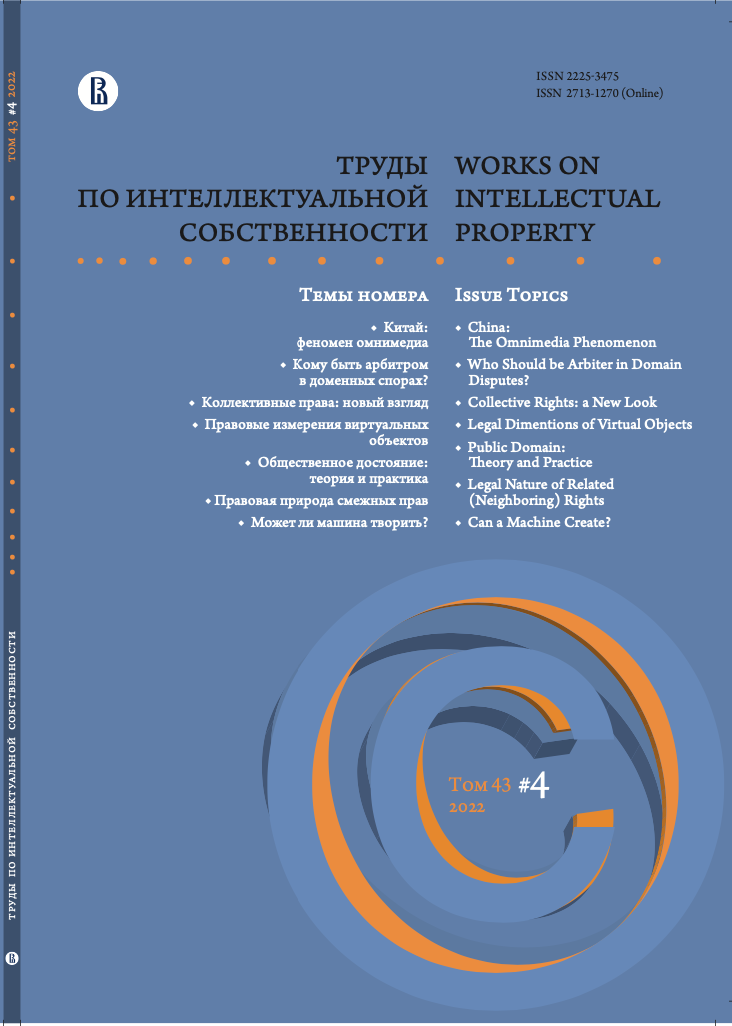RELATED RIGHTS: A COMPARATIVE ANALYSIS OF HETEROGENEOUS RIGHTS
Abstract
The realization of human rights and freedoms, including freedom of creativity, participation in scientific and technological progress and the use of its benefits, all this ensures the formation of certain resources for the development of both the individual and society as a whole. Therefore, the realization of related rights in modern conditions is of particular relevance, since it is the holders of these rights who reveal new horizons for the dissemination and use of creative and other information aimed at transforming and improving the living conditions of a person and society as a whole. Given the vagueness and heterogeneity of related rights, it is advisable to study the objects and subjects of this category of rights in order to prevent restrictions on the legal protection of their holders. In the study of the essence of related rights, a dialectical method was used, which made it possible to comprehensively study the content of the subject. Generalization of existing definitions and the legislative framework allowed us to identify the characteristic features of the category under study: for objects of related rights, a characteristic feature is the result, clothed in a certain form with the help, as a rule, of technical means; related rights are only a set of legal norms regulating the protection of heterogeneous rights; the grounds for the emergence of related rights are divided into categories: for one, only activities based on creative potential that are not related to material costs are sufficient, and for others, actions related to certain costs; related rights arise and can be implemented without observing any there were no formalities. Related rights arise and can be implemented without observing any formalities. The necessity of expanding the subject composition in order to ensure the protection of related rights at the legislative level is substantiated.


